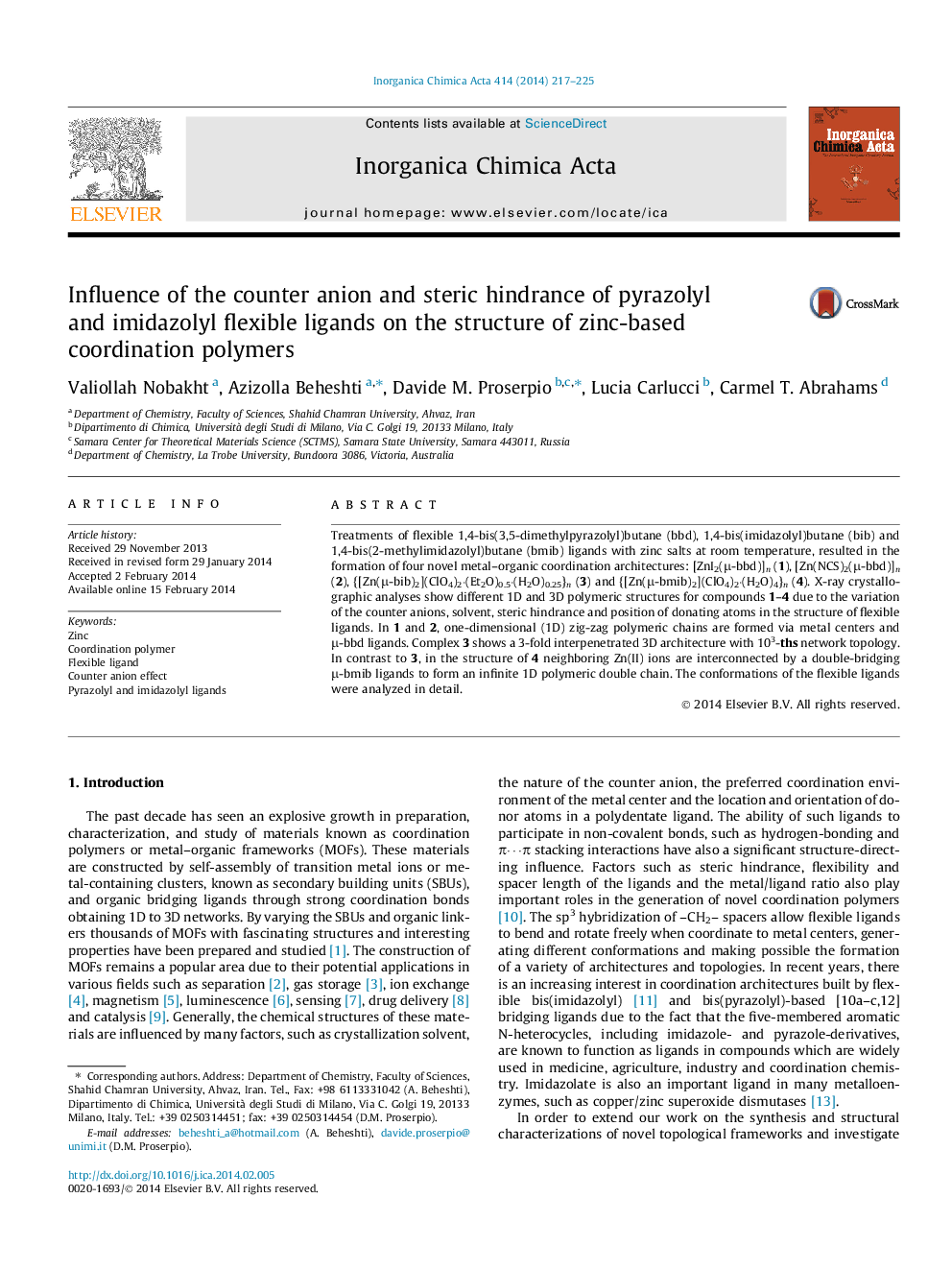| Article ID | Journal | Published Year | Pages | File Type |
|---|---|---|---|---|
| 1305686 | Inorganica Chimica Acta | 2014 | 9 Pages |
•Conformations of the flexible ligands were analyzed in the crystal structures.•The complexes have been characterized by crystallographic and spectroscopic methods.•Counter anions and steric hindrance were used to tune the dimensionality of polymers.
Treatments of flexible 1,4-bis(3,5-dimethylpyrazolyl)butane (bbd), 1,4-bis(imidazolyl)butane (bib) and 1,4-bis(2-methylimidazolyl)butane (bmib) ligands with zinc salts at room temperature, resulted in the formation of four novel metal–organic coordination architectures: [ZnI2(μ-bbd)]n (1), [Zn(NCS)2(μ-bbd)]n (2), {[Zn(μ-bib)2](ClO4)2·(Et2O)0.5·(H2O)0.25}n (3) and {[Zn(μ-bmib)2](ClO4)2·(H2O)4}n (4). X-ray crystallographic analyses show different 1D and 3D polymeric structures for compounds 1–4 due to the variation of the counter anions, solvent, steric hindrance and position of donating atoms in the structure of flexible ligands. In 1 and 2, one-dimensional (1D) zig-zag polymeric chains are formed via metal centers and μ-bbd ligands. Complex 3 shows a 3-fold interpenetrated 3D architecture with 103-ths network topology. In contrast to 3, in the structure of 4 neighboring Zn(II) ions are interconnected by a double-bridging μ-bmib ligands to form an infinite 1D polymeric double chain. The conformations of the flexible ligands were analyzed in detail.
Graphical abstractFour Zn(II) coordination polymers showing structural diversity on varying the counter anions, solvent and steric hindrance of flexible ligands have been synthesized and characterized. Different 1D chains and a 3-fold interpenetrated 3D network with 103-ths topology have been isolated. The flexible ligands showing different conformations in the polymeric structures have been isolated.Figure optionsDownload full-size imageDownload as PowerPoint slide
